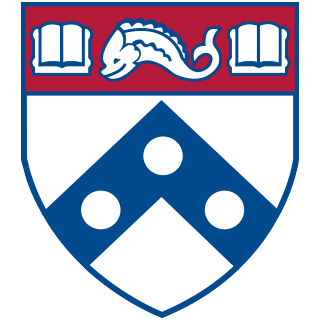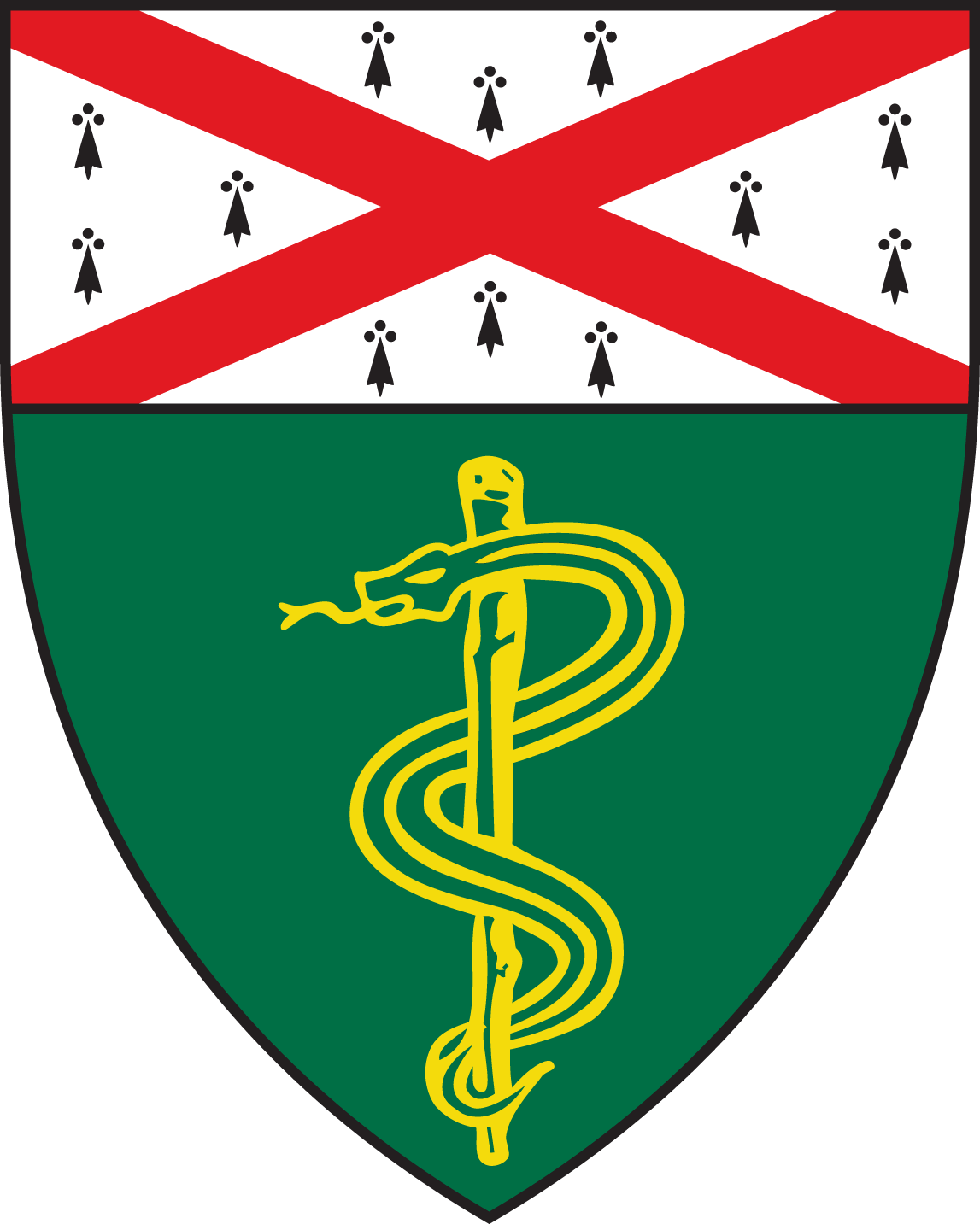Professor, Neurology, University of Michigan Medical School
Neurology
Henry Paulson works in the field of Neurology. He attended Yale University School of Medicine. Yale University School of Medicine is a top medical university. Yale University School of Medicine is ranked 7 in research and 57 in primary care medicine He over the years received 17 awards: "Taubman Senior Scholar", "CMS Meaningful Use Stage 1 Certification", "The Best Doctors in America", "Neuroscience Scholar Award", "Elected Fellow", "Elected Membership", "Matthew Moore Distinguished Lectureship", "Paul Beeson Physician Faculty Scholar in Aging", "Semi-Finalist", "New Scholars Award", "National Research Service Award Fellowship", "Research Fellowship Award", "Postdoctoral Research Fellowship", "Howard Hughes Medical Institute Postdoctoral Fellowship", "Zeritsky Prize", "Best Intern" and "Medical Scientist Training Program Fellowship". Henry L. Paulson, MD is a published physician as well. He has 101 publications published. The latest was: Protein fate in neurodegenerative proteinopathies: polyglutamine diseases join the (mis)fold. Henry L. Paulson, MD accepts all Medicare patients.
Publications
- Intrinsic disorder drives N-terminal ubiquitination by Ube2w.
- Effects of Multiple Genetic Loci on Age at Onset in Late-Onset Alzheimer Disease: A Genome-Wide Association Study.
- Differential effects of delayed aging on phenotype and striatal pathology in a murine model of huntington Disease.
- A knock-in mouse model of Spinocerebellar ataxia type 3 exhibits prominent aggregate pathology and aberrant splicing of the Disease gene transcript.
- Clinical Evaluation of Eye Movements in Spinocerebellar Ataxias: A Prospective Multicenter Study.
- Alterations in cerebellar physiology are associated with a stiff-legged Gait in Atcay(ji-hes) mice.
- TMEM106B is a genetic modifier of frontotemporal lobar degeneration with C9orf72 hexanucleotide repeat expansions.
- F-box only protein 2 (Fbxo2) Regulates Amyloid Precursor Levels and Processing.
- C9orf72-associated FTD/ALS: when less is more.
- Toward RNAi Therapy for the Polyglutamine Disease Machado-Joseph Disease.
- Transcriptional changes and developmental abnormalities in a Zebrafish model of Myotonic Dystrophy Type 1.
- The E3 Ubiquitin Ligase CHIP and the Molecular Chaperone Hsc70 Form a Dynamic, Tethered Complex.
- Silencing Mutant ATXN3 Expression Resolves Molecular Phenotypes in SCA3 Transgenic Mice.
- New hope for therapy in neurodegenerative Diseases.
- The de-ubiquitinating enzyme ataxin-3 does not modulate Disease progression in a knock-in mouse model of Huntington Disease.
- The ubiquitin conjugating enzyme (E2) Ube2w ubiquitinates the N-terminus of substrates.
- JosD1, a membrane-targeted deubiquitinating enzyme, is activated by ubiquitination and regulates membrane dynamics, Cell motility and endocytosis.
- CGG Repeat-Associated Translation Mediates Neurodegeneration in Fragile X Tremor Ataxia Syndrome.
- Analysis of the Tau-Associated Proteome Reveals That Exchange of Hsp70 for Hsp90 Is Involved in Tau Degradation.
- Cognitive decline and aging: the role of concussive and subconcussive impacts.
- Coexistence of Huntington's Disease and amyotrophic lateral sclerosis: a clinicopathologic study.
- Alzheimer's Disease and environmental exposure to lead: the epidemiologic evidence and potential role of epigenetics.
- Genome-wide DNA methylation differences between late-onset Alzheimer's Disease and cognitively normal controls in human frontal cortex.
- Toward understanding Machado-Joseph Disease.
- Compromised mitochondrial complex II in models of Machado-Joseph Disease.
- Early changes in cerebellar physiology accompany motor dysfunction in the polyglutamine Disease spinocerebellar ataxia type 3.
- Ube2w and Ataxin-3 Coordinately Regulate the Ubiquitin Ligase CHIP.
- Balancing act: deubiquitinating enzymes in the Nervous system.
- Splice isoform-specific suppression of the Ca(V)2.1 variant underlying spinocerebellar Ataxia type 6.
- Activity and cellular functions of the deubiquitinating enzyme and polyglutamine Disease protein ataxin-3 are regulated by ubiquitination at lysine 117.
- Early alterations of autophagy in Huntington Disease-like mice.
- RNA-mediated neurodegeneration in repeat expansion Disorders.
- Histone deacetylases suppress CGG repeat-induced neurodegeneration via transcriptional silencing in models of fragile X tremor Ataxia syndrome.
- Understanding the role of the Josephin domain in the PolyUb binding and cleavage properties of ataxin-3.
- Ataxin-3 plays a role in mouse myogenic differentiation through regulation of integrin subunit levels.
- Splice isoforms of the polyglutamine Disease protein ataxin-3 exhibit similar enzymatic yet different aggregation properties.
- Physiologic alterations in Ataxia: channeling changes into novel therapies.
- Allele-specific RNAi mitigates phenotypic progression in a transgenic model of Alzheimer's Disease.
- The spinocerebellar Ataxias.
- In vivo suppression of polyglutamine neuroToxicity by C-terminus of Hsp70-interacting protein (CHIP) supports an aggregation model of pathogenesis.
- Obsessive and compulsive symptoms in prediagnosed Huntington's Disease.
- The deubiquitinating enzyme ataxin-3, a polyglutamine Disease protein, edits Lys63 linkages in mixed linkage ubiquitin chains.
- Diversity in tissue expression, substrate binding, and SCF complex formation for a lectin family of ubiquitin ligases.
- Risperidone and the treatment of psychiatric, motor, and cognitive symptoms in Huntington's Disease.
- Cellular turnover of the polyglutamine Disease protein ataxin-3 is regulated by its catalytic activity.
- Selective cochlear degeneration in mice lacking the F-box protein, Fbx2, a glycoprotein-specific ubiquitin ligase subunit.
- Dominantly inherited ataxias: lessons learned from Machado-Joseph Disease/spinocerebellar ataxia type 3.
- A novel route for F-box protein-mediated ubiquitination links CHIP to glycoprotein quality control.
- If it's not one thing, it's another.
- Brain structure in preclinical Huntington's Disease.
- RNA interference in neuroscience: progress and challenges.
- Silencing primary Dystonia: lentiviral-mediated RNA interference therapy for DYT1 Dystonia.
- CHIP suppresses polyglutamine aggregation and Toxicity in vitro and in vivo.
- Defining the role of ubiquitin-interacting motifs in the polyglutamine Disease protein, ataxin-3.
- Breaks in coordination: DNA repair in inherited Ataxia.
- RNA interference improves motor and neuropathological abnormalities in a Huntington's Disease mouse model.
- Ataxin-3 suppresses polyglutamine neurodegeneration in Drosophila by a ubiquitin-associated mechanism.
- RNAi suppresses polyglutamine-induced neurodegeneration in a model of spinocerebellar Ataxia.
- Aberrant cellular behavior of mutant torsinA implicates nuclear envelope dysfunction in DYT1 Dystonia.
- Poly-ubiquitin binding by the polyglutamine Disease protein ataxin-3 links its normal function to protein surveillance pathways.
- Allele-specific silencing of dominant Disease genes.
- Toward therapy for DYT1 Dystonia: allele-specific silencing of mutant TorsinA.
- Genetics of pediatric movement Disorders.
- Transient central nervous system white matter abnormality in X-linked Charcot-Marie-Tooth Disease.
- siRNA-mediated gene silencing in vitro and in vivo.
- Diagnostic testing in neurogenetics. Principles, limitations, and ethical considerations.
- Live-cell imaging reveals divergent intracellular dynamics of polyglutamine Disease proteins and supports a sequestration model of pathogenesis.
- Early autophagic response in a novel knock-in model of Huntington Disease.
- Caring for Machado-Joseph Disease: current understanding and how to help patients.
- Establishment of a novel fluorescence-based method to evaluate chaperone-mediated autophagy in a single neuron.
- The Machado-Joseph Disease-associated mutant form of ataxin-3 regulates parkin ubiquitination and stability.
- Conditional Niemann-Pick C mice demonstrate Cell autonomous Purkinje Cell neurodegeneration.
- Ubiquitination directly enhances activity of the deubiquitinating enzyme ataxin-3.
- Polyglutamine neurodegeneration: protein misfolding revisited.
- Technology insight: therapeutic RNA interference--how far from the neurology clinic?
- Spinocerebellar Ataxias: an update.
- Dangerous liaisons: polyglutamine meets HMGB.
- Allele-specific RNA interference for neurological Disease.
- Caspase-mediated proteolysis of the polyglutamine Disease protein ataxin-3.
- The role of protein composition in specifying nuclear inclusion formation in polyglutamine Disease.
- Destabilization of a non-pathological variant of ataxin-3 results in fibrillogenesis via a partially folded intermediate: a model for misfolding in polyglutamine Disease.
- Targeting Alzheimer''s Disease genes with RNA interference: an efficient strategy for silencing mutant alleles.
- Molecular medicine for the brain: silencing of Disease genes with RNA interference.
- Protein aggregation and the ubiquitin proteasome pathway: gaining the UPPer hand on neurodegeneration.
- Polyglutamine Disease and neuronal cell death.
- Mechanisms of chaperone suppression of polyglutamine Disease: selectivity, synergy and modulation of protein solubility in Drosophila.
- Protein fate in neurodegenerative proteinopathies: polyglutamine Diseases join the (mis)fold.
- Evidence for proteasome involvement in polyglutamine Disease: localization to nuclear inclusions in SCA3/MJD and suppression of polyglutamine aggregation in vitro.
- Ataxin-3 with an altered conformation that exposes the polyglutamine domain is associated with the nuclear matrix.
- Analysis of the role of heat shock protein (Hsp) molecular chaperones in polyglutamine Disease.
- Suppression of polyglutamine-mediated neurodegeneration in Drosophila by the molecular chaperone HSP70.
- Toward an understanding of polyglutamine neurodegeneration.
- Analysis of early events in acetylcholine receptor assembly.
- Temperature-sensitive expression of all-Torpedo and Torpedo-rat hybrid AChR in mammalian muscle Cells.
- Fibroblasts transfected with Torpedo acetylcholine receptor beta-, gamma-, and delta-subunit cDNAs express functional receptors when infected with a retroviral alpha r...
- Morphometric analysis of coated pits and vesicles in the proximal and distal caput epididymidis.
- Genetic reconstitution of functional acetylcholine receptor channels in mouse fibroblasts.
- Immunocytochemical localization of alpha-lactalbumin in the male reproductive tract.
- Hemiachromatopsia of unilateral occipitotemporal infarcts.
- Trinucleotide repeat expansion in neurological Disease.
Schools
Procedures Preformed
- EEG (Electroencephalogram)
Conditions Treated
- Alzheimer's Disease
- Anterior Horn Disease
- Ataxia
- Autonomic Disorders
- View All
Doctors Specialties
Accepted Insurances
Awards
- Taubman Senior Scholar
- CMS Meaningful Use Stage 1 Certification
- The Best Doctors in America
- Neuroscience Scholar Award
- Elected Fellow
- Elected Membership
- Matthew Moore Distinguished Lectureship
- Paul Beeson Physician Faculty Scholar in Aging
- Semi-Finalist
- New Scholars Award
- National Research Service Award Fellowship
- Research Fellowship Award
- Postdoctoral Research Fellowship
- Howard Hughes Medical Institute Postdoctoral Fellowship
- Zeritsky Prize
- Best Intern
- Medical Scientist Training Program Fellowship
Education
-
 University of Pennsylvania Health System
University of Pennsylvania Health System
-
 Yale University School of Medicine
Yale University School of Medicine
Hospital
-
 University of Michigan Hospitals and Health Centers
University of Michigan Hospitals and Health Centers
Drug Facts
| NPI NUMBER |
|
1497748537 |
| NPPES Provider LastName |
|
PAULSON |
| NPPES Provider FirstName |
|
HENRY |
| NPPES Provider ZIPCode |
|
481095322 |
| NPPES Provider State |
|
MI |
| Specialty Description |
|
Neurology |
| Total Claim Count |
|
51.0 |
| Distinct Opioid Count |
|
0.0 |
| Opioid Claim Count |
|
0.0 |
| Percent Opioid Claims |
|
0.0 |
Helpful Reviews
Give
Anonymous Review
Medicare Facts
| National Provider Identifier [NPI] |
1497748537 |
| Last Name Of The Provider |
PAULSON |
| First Name Of The Provider |
HENRY |
| View All |
|
Similar Doctors
Doctor Directory | TOS | twitter | FB | Angel | blog
 University of Pennsylvania Health System
University of Pennsylvania Health System Yale University School of Medicine
Yale University School of Medicine University of Michigan Hospitals and Health Centers
University of Michigan Hospitals and Health Centers
 This Doctor is OpenDoctor Recommended.
This Doctor is OpenDoctor Recommended.

 This Doctor is OpenDoctor Recommended.
This Doctor is OpenDoctor Recommended.



 This Doctor is OpenDoctor Recommended.
This Doctor is OpenDoctor Recommended.